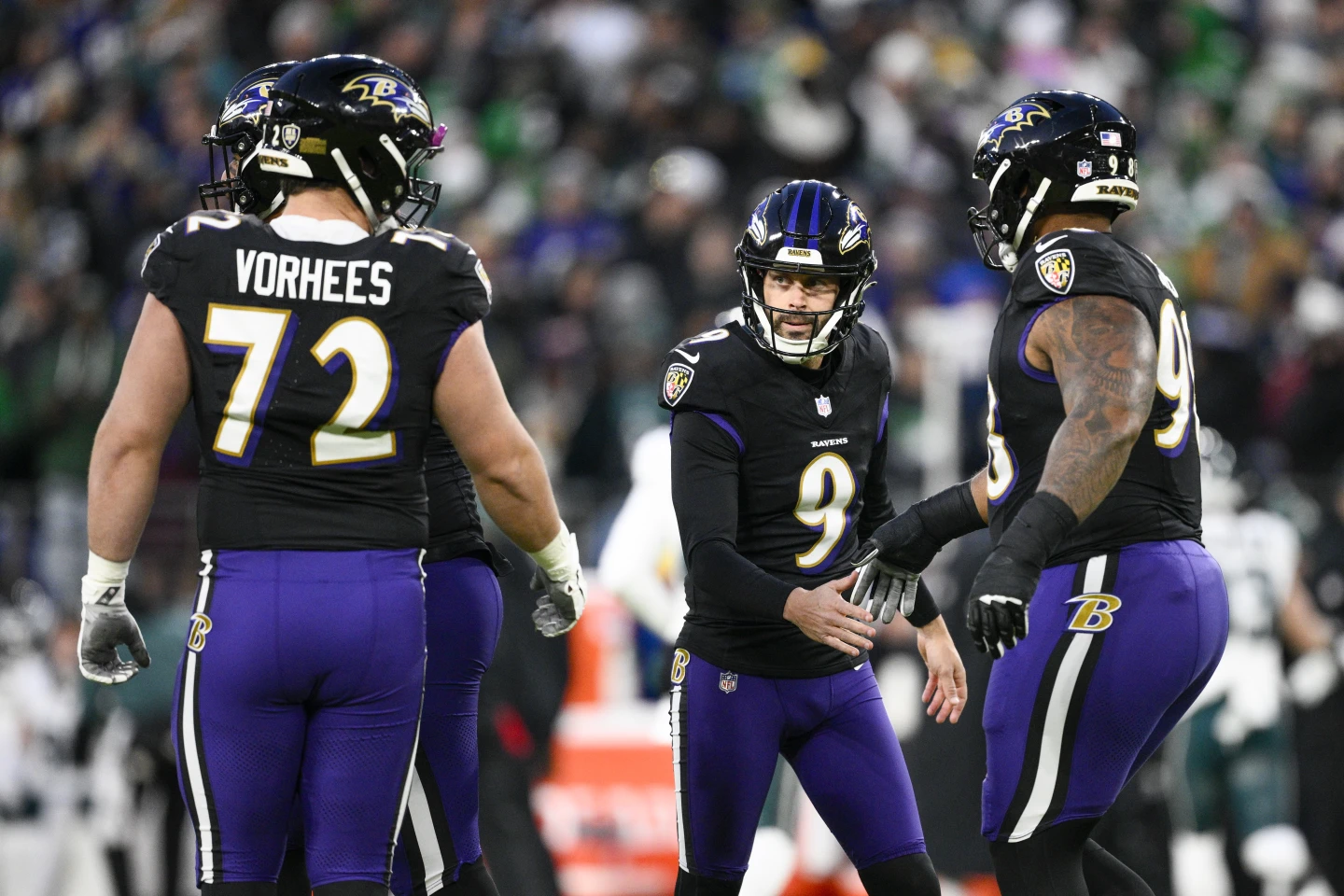The 2024 NFL season marks the fifth year of the 14-team playoff format. The league’s move to expand the playoffs from 12 teams to 14 was made primarily to boost revenue. Adding an extra team in each conference and removing the first-round bye previously given to the No. 2 seed created two more playoff games, which helped generate hundreds of millions of dollars for the league’s owners.
With five seasons of wild-card rounds completed and the College Football Playoff growing to 12 teams this year, now seems like a good time to evaluate the NFL postseason. What’s the real impact beyond the financial gains?
Are the playoffs more enjoyable for fans? With nearly half of the league’s teams entering the postseason, has it become watered down? Should the NFL change the format again? Lions wide receiver Amon-Ra St. Brown definitely thinks so.
Let’s look back at lessons from the first five years of the 14-team playoff format and think about potential changes, both good and bad.
How has the 14-team format affected the NFL?
The No. 7 seed has mostly been a weak link. Since the format change in 2020, the No. 7 seed has faced the No. 2 seed, which would have previously had a bye. The 10 No. 7 seeds since then have only won once. The lone victory came in 2023, when the Packers defeated the Cowboys 48-32. This year, the Packers lost to the Eagles by 12 points, while the Broncos, also a No. 7 seed, were outscored 31-0 by the Bills after scoring an early touchdown.
While the Packers’ performance last season was exciting, most No. 7 seeds haven’t looked like Super Bowl contenders. In 2020, Bears fans probably didn’t expect much from Mitchell Trubisky’s 8-8 team, and the Dolphins, finishing the season with Skylar Thompson as quarterback in 2022, didn’t have much hope either. The No. 7 seed has mostly given poor teams a chance to be beaten badly in the playoffs.
By the play-by-play metric DVOA, though, the No. 7 seed hasn’t been made up of terrible teams. On average, the seventh seed has been the 11th-best team in the league entering the playoffs. This includes the Packers (fourth) and the Broncos (sixth) in 2024.
The only team that clearly shouldn’t have been in the playoffs was the 2021 Steelers. They had been outscored by 55 points and ranked 24th in DVOA, with ESPN’s Football Power Index (FPI) ranking them 20th overall that season. They won only two games against playoff teams and then were blown out 42-21 by the Chiefs in the wild-card round, with Patrick Mahomes passing for 404 yards and five touchdowns.
Top seeds are still making it to the Super Bowl at the same rate. In the 14-team format, only one team in each conference earns a bye. This gives teams more reason to compete for the No. 1 seed, as it provides a better chance at reaching the Super Bowl. These teams are the only ones who can’t be upset in the wild-card round, and they get to play their easiest opponent at home until the Super Bowl.
While it’s too soon to know which team will make it to the Super Bowl this season, the numbers so far show little change. Since the 14-team format was introduced, 50% of No. 1 seeds have reached the Super Bowl. In the one instance where both top seeds reached the title game (Super Bowl LVII), the Chiefs defeated the Eagles.

From 2002, when the NFL expanded to 32 teams, until 2019, the last year with the 12-team format, the same percentage of No. 1 seeds—50%—made it to the Super Bowl. In fact, five times in those 18 years, both No. 1 seeds made it to the championship. The shift to the 14-team format hasn’t made a noticeable difference for top seeds.
The value of the 2-seed has decreased. Since 2020, the No. 7 seeds are 1-9 in the wild-card round, meaning No. 2 seeds are 9-1. Facing seemingly overmatched teams can seem like a benefit of earning the No. 2 seed, but it also means the No. 2 seed no longer gets a bye, unlike in the 12-team format.
In the past, the difference between the No. 1 and No. 2 seeds wasn’t as important. Both seeds earned the week off during the wild-card round, but now only the No. 1 seed gets the extra week to rest.
Will teams stop caring about the No. 2 seed? There’s one clear example of a team disregarding the 2-seed in 2020. The Steelers rested Ben Roethlisberger and other key players in their final regular-season game, even though winning that game and getting help from the Bills could have given them the No. 2 seed. The Bills won, so it didn’t matter, but it was a clear sign that some teams may not see much value in the 2-seed anymore.
What changes could the NFL consider? It’s time to think about potential changes. The league may not need to alter the postseason format, but there might be ways to improve the quality of play or make the end of the regular season more meaningful. Let’s explore some possibilities and think about the pros, cons, and likelihood of each.
Option No. 1: Return to a 12-team playoff
Pros: A 12-team playoff would likely reduce the number of teams seen as hopeless entering the postseason. While 7-seeds have not made deep playoff runs yet, it’s possible that a 7-seed could make it far in the future, similar to how the 6-seed Packers won the Super Bowl in 2010. A 12-team playoff would also bring back the two-bye system, making the No. 2 seed more valuable, although it would reduce the importance of the No. 1 seed.
Cons: A 12-team playoff would cut two playoff games, meaning the NFL would lose around $140 million annually in TV rights fees, plus the revenue from those games.
Plausibility: This option is unlikely. The league would not want to return to the 12-team playoff format. Even though No. 7 seeds haven’t been as competitive, data shows that these teams are often better than expected, and reducing the playoff size doesn’t seem necessary.
Option No. 2: Expand to a 16-team playoff
Pros: Expanding to a 16-team playoff would mean half of the league makes it to the postseason, potentially making the final weeks of the regular season more exciting. More playoff spots would keep more teams in contention late in the season, which could prevent teams from starting third-string quarterbacks in meaningless games. It would also bring in more money from additional playoff games, benefiting NFL owners.

Cons: The most realistic way to implement a 16-team playoff would be to create an eight-team bracket in each conference, which would mean the No. 1 seed wouldn’t get a bye. While other sports like the NBA and NHL have done this, it might not work well in football.
Plausibility: This option has a slim chance. While the league would enjoy the extra revenue, teams would likely resist losing the advantage of a bye week for the No. 1 seed. It could also reduce the incentive to compete hard late in the season. This might become more realistic in the future if the NFL expands to 18 regular-season games and adds more teams.
Option No. 3: Re-seed the playoffs based on record, not division
Pros: Re-seeding the playoffs would mean that a team with a better record than a division winner could get a higher seed and a home game. For example, in 2024, the Vikings were a 14-win wild-card team, while division winners like the Buccaneers or Falcons were weaker.
Re-seeding could create a fairer and more exciting playoff picture, where the best teams are rewarded. Teams that have already clinched a division could still have something to play for, like competing for a home playoff game.
Cons: NFL schedules are based on divisions, so good teams can sometimes have an easier schedule if they are in a weak division. For example, in 2012, the Ravens won the AFC North with a 10-6 record but had to play a tougher schedule, while the Colts, who had an easier schedule, finished 11-5. Re-seeding could lead to unfair situations like this.
Plausibility: This option seems reasonable, and there could be discussions about it in the offseason. However, it may take time for the league to make this change. Extreme examples of unfair playoff matchups may not happen often, so the league may not feel the need to implement this change immediately.
Option No. 4: Remove home playoff games from divisional champions with losing records
Pros: This idea seems more realistic. Hosting a playoff game would become a bit like earning bowl eligibility, where a team needs at least nine wins to qualify. If a team wins its division with a losing record, like the 2022 Buccaneers (8-9) or the 2020 Commanders (7-9), its first-round playoff game would be played on the road against the best wild-card team. Since both the Buccaneers and Commanders lost badly at home in their playoff games, it’s hard to argue they deserved to play at home.
Cons: Things don’t always go as expected. For example, in 2010, the 6-9 Seahawks won their division in Week 17 and hosted an 11-5 Saints team in Seattle instead of playing in New Orleans. The Seahawks went on to pull off a huge upset.
Plausibility: This could happen. No team wants to win its division and miss out on hosting a playoff game, but for every 8-9 team that would lose its right to host, there’s another team with a better record that would benefit. It’s possible that a sub-.500 team could be in a tough division and win against a difficult schedule, but this scenario doesn’t seem very common. This idea seems like a good one, though it wouldn’t happen often.
Option No. 5: Re-seed only the wild cards across conferences
Pros: Since the NFL moved to the 17-game season, the balance between the AFC and NFC has shifted. In this proposal, the four division champions would stay on their side of the bracket, but the six wild-card teams would be ranked based on their overall standings. The tiebreakers would likely come from the NFL draft order.
In this year’s playoffs, this would have meant different matchups. The Eagles would have hosted the Broncos, and the Bills would have played the Steelers. There would also be another Harbaugh Bowl with the Ravens facing the Chargers. The Rams would have played the Packers, and the Vikings would have met the Texans, the weakest of the division winners.

Even in a season where most matchups are between teams in the same conference, the bracket feels fresher, with a real reward for being the best wild-card team. Some years, both AFC and NFC teams would compete for the same playoff spot at the end of the season. For example, the Seahawks would have missed the playoffs in favor of the Steelers and Broncos based on their strength of schedule.
In seasons where one conference is stronger than the other, this method would help ensure deserving teams from the stronger conference make it to the playoffs. For example, in 2020, the 10-6 Dolphins didn’t make the playoffs in the AFC, while the 8-8 Bears did in the NFC.
After the wild-card round, the bracket would be re-seeded each week. In 2024, this would lead to the same matchups happening as they do in the current system. Though not every season would produce many AFC-NFC battles, the playoffs would feel more exciting with new matchups.
Cons: Not everyone would enjoy the new matchups. Rival teams, like the Ravens and Steelers, wouldn’t face each other as often, which can be fun but might not lead to the most thrilling games. It’s also unclear how many fans would like cross-conference matchups, even if they’re enjoyable.
Plausibility: This seems unlikely. The changes might be more trouble than they’re worth, and owners might prefer the familiar matchups between long-time rivals rather than playing teams they rarely face. With so many possible opponents, scouting could become more difficult, leading to sloppier games.
Option No. 6: Let teams choose their opponents in the wild-card round
Pros: This would be exciting and provide a clear advantage for the 2-seed in each conference. After the last regular-season game on Sunday night, there would be a live show where higher-seeded teams get to choose their opponent for the wild-card round. The 2-seed could choose between the 5-, 6-, or 7-seed. The 3-seed would then pick between the remaining two teams, and the 4-seed would get the last matchup available.
For example, in the NFC, things might play out the same way, but in the AFC, the matchups could change. Would the 2-seed Bills choose the Broncos, or would they prefer facing the struggling Steelers? Would the 3-seed Ravens pick the Broncos, or would they go for the Texans, a team they beat easily last year?
After this, the league could either re-seed the matchups, follow the original bracket, or let the top seeds pick again for the divisional round. This would give teams that performed better in the regular season more control over who they face in the playoffs. The Professional Women’s Hockey League uses this system for their playoff teams, and it would be great to see the NFL try it.
Cons: This idea has been suggested by others in different sports, and the main issue is that coaches likely wouldn’t agree. Teams are often worried about giving their opponents extra motivation before the playoffs.
For instance, the Rams used a comment from Lions coach Dan Campbell as inspiration before their big win over the Vikings. Imagine if an NFL coach said on TV that they wanted to play a certain team. If an upset happened, it could lead to serious consequences, like someone getting fired.
Plausibility: This will probably never happen, but it would be a lot of fun to see.